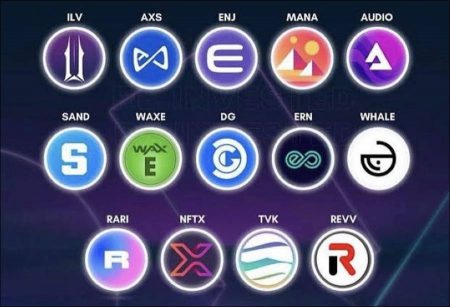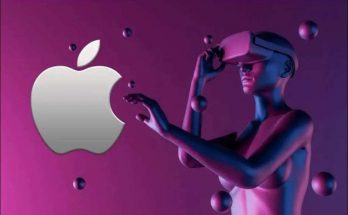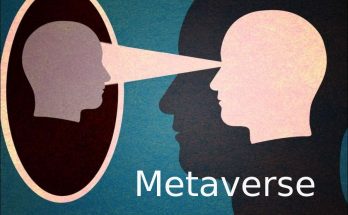Metaverse is a term used to describe virtual space in digital environments such as online games, social media, and virtual reality. It is a network of always-on virtual environments where many people can interact with each other and with digital objects while running their own virtual representations or avatars.
Illuvium (ILV)
Illuvium (ILV) is an open world fantasy war game built on the Ethereum blockchain infrastructure. Often touted as the first AAA game on the Ethereum network, Illuvium promises to provide entertainment to casual and experienced DeFi users alike, through a variety of collectible and trading features.
In the world of Illuvium, where creatures known as Illuvial live, players can take over the creatures by fighting and restore them to their health. These creatures, which later become a valuable part of the players’ collection, can also be used when fighting other participants thanks to Illuvium’s auto-battle feature.
The exploratory open world and the arena mode where players fight each other (PVP) are blended within the game. Users can explore the game world if they wish, or they can create teams of powerful monsters.
In development since 2020, Illuvium has been implemented by a worldwide team of more than 40 people, including the founders. The founders are serial entrepreneur and early cryptocurrency supporter Kieran Warwick and his brother Aaron Warwick, a veteran game designer. (And interestingly, fellow co-founder Kain Warwick, one of the co-founders of DeFi platform Synthetix).
Axie Infinity (AXS)
Axie Infinity is a blockchain-based trading and battling game that is partially owned and operated by its players.
To learn more about this project, check out our deep dive of Axie Infinity. Inspired by popular games like Pokémon and Tamagotchi, Axie Infinity allows players to collect, breed, raise, battle and trade token-based creatures known as Axies.
These Axies can take various forms, and there are more than 500 different body parts available, including aquatic, beast, bird, bug, plant and reptile parts. Parts from each type class come in four different rarity scales: common, rare, ultra rare and legendary — and Axies can have any combination of body parts, making them highly variable and often rare and unique.
Each Axie is a non-fungible token (NFT) with different attributes and strengths and can be entered into 3v3 battles, with the winning team earning more experience (exp) points that are used to level up an Axie’s stats or evolve their body parts. These Axies can be bred together to produce new and unique offspring, which can be used or sold on the Axie marketplace.
The Axie Infinity ecosystem also has its own unique governance token, known as Axie Infinity Shards (AXS). These are used to participate in key governance votes and will give holders a say in how funds in the Axie Community Treasury are spent.
Enjin (ENJ)?
Enjin Coin; It is the project of Enjin company, which provides an interconnected ecosystem for blockchain-based gaming products. Enjin’s flagship technology is the social gaming platform called Enjin Network. Here users can create websites or clans, chat and open digital goods stores.
Thanks to Enjin, game developers have the ability to tokenize in-game items on the Ethereum blockchain. Enjin Coin, an ERC-20 standard token, is used to support digital assets shared on the platform. This asset enables digital items to be bought, sold and exchanged at a valid value in the real world.
Enjin Coin was first announced in July 2017 and launched on the Ethereum mainnet in June 2018. Enjin Coin (ENJ) is also a digital store of value used to deliver value to blockchain assets such as unique tokens (non-fungible tokens, NFTs). ENJ is used for every asset created on the Enjin Platform. These are locked in the NFT and removed from circulation. Mining blockchain assets using ENJ provides several benefits to creators and users.
Decentraland (MANA)
Decentraland (MANA) defines itself as a virtual reality platform powered by the Ethereum blockchain that allows users to create, experience, and monetize content and applications. In this virtual world, users purchase plots of land that they can later navigate, build upon and monetize.
Decentraland was launched following a $24 million initial coin offering (ICO) that was conducted in 2017. The virtual world launched its closed beta in 2019 and opened to the public in February 2020. Since then, users have created a wide range of experiences on their parcels of LAND, including interactive games, sprawling 3D scenes and a variety of other interactive experiences.
Decentraland uses two tokens: MANA and LAND. MANA is an ERC-20 token that must be burned to acquire non-fungible ERC-721 LAND tokens. MANA tokens can also be used to share for a range of avatars, wearables, names, and more on the Decentraland marketplace.
Audio Coin (AUDIO)
The music broadcasting industry, where digitalization is effective, also gets its share from the blockchain transformation. Musicians who want to get away from monopolized record companies and audio broadcasting organs are in search of a platform where they can publish their works. In addition, they want the platform on which they broadcast to be a fair income model and to be more free. The Audius project was developed as a great alternative to the music streaming industry in order to close this gap.
The Sandbox (SAND)
The Sandbox; It is a user-managed decentralized virtual world where players have the power to design, share and sell assets for play. Sandbox metaverse is one of the few Blockchain-based virtual worlds trying to change the dynamics of the gaming market and reward creators for the value they generate through user-generated content. It is an ERC-20 utility token built on the Ethereum Blockchain.
The Sandbox is an Ethereum-based metadata warehouse and gaming ecosystem where users can create, share and monetize in-world assets and gaming experiences. Created by the Pixowl company, The Sandbox is designed to disrupt the traditional gaming market, where platforms own and control user-generated content. While on other platforms the rights of creators and players are restricted, in The Sandbox, users have absolute ownership over their creations in the virtual world.
In The Sandbox, players can turn their gaming experiences into money via the SAND token on the Ethereum Blockchain. Players can create digital ASSETs in NFT format, upload these ASSETs to the market and integrate them into games via Game Maker. Users can earn money in various ways during the time they spend on the platform.
Using the ERC-1776 protocol, The Sandbox improves the overall user experience by allowing platform users to perform transactions on Ethereum while paying their gas fees.
Waxe (WAXE)
WAXE (The Worldwide Asset eXchange™) is the most used and transacted blockchain ecosystem in the world for NFTs, dApps and video games — providing the safest and most convenient way to create, buy, sell and trade both virtual and physical items to anyone, anywhere in the world.
Known best as “The King of NFTs”, WAX is the leading NFT network and has successfully facilitated the trade of millions of NFTs from partners including Topps (Major League Baseball), Capcom (Street Fighter), Funko, Atari, Sony’s Funimation, and famous films (Princess Bride and SAW), world-renowned entertainers (Deadmau5, Weezer and William Shatner), and many more.
Furthermore, WAX has innovated vIRL® NFTs, which are different from the standard NFTs you’ll find on other blockchains. They feature a host of dynamic functionality including app/video game integrations, marketing tools and V-commerce capabilities — linking a vIRL® NFT to a real-world item, so you can transfer ownership without needing to physically ship anything until a collector is ready to claim it as their own. Every vIRL® NFT is minted on the energy efficient and carbon neutral WAX Blockchain that puts the environment first.
The above is only the tip of the iceberg. In the coming months, brands and consumers alike can expect WAX to make huge leaps toward revolutionizing the world of digital commerce.
Hits: 76



